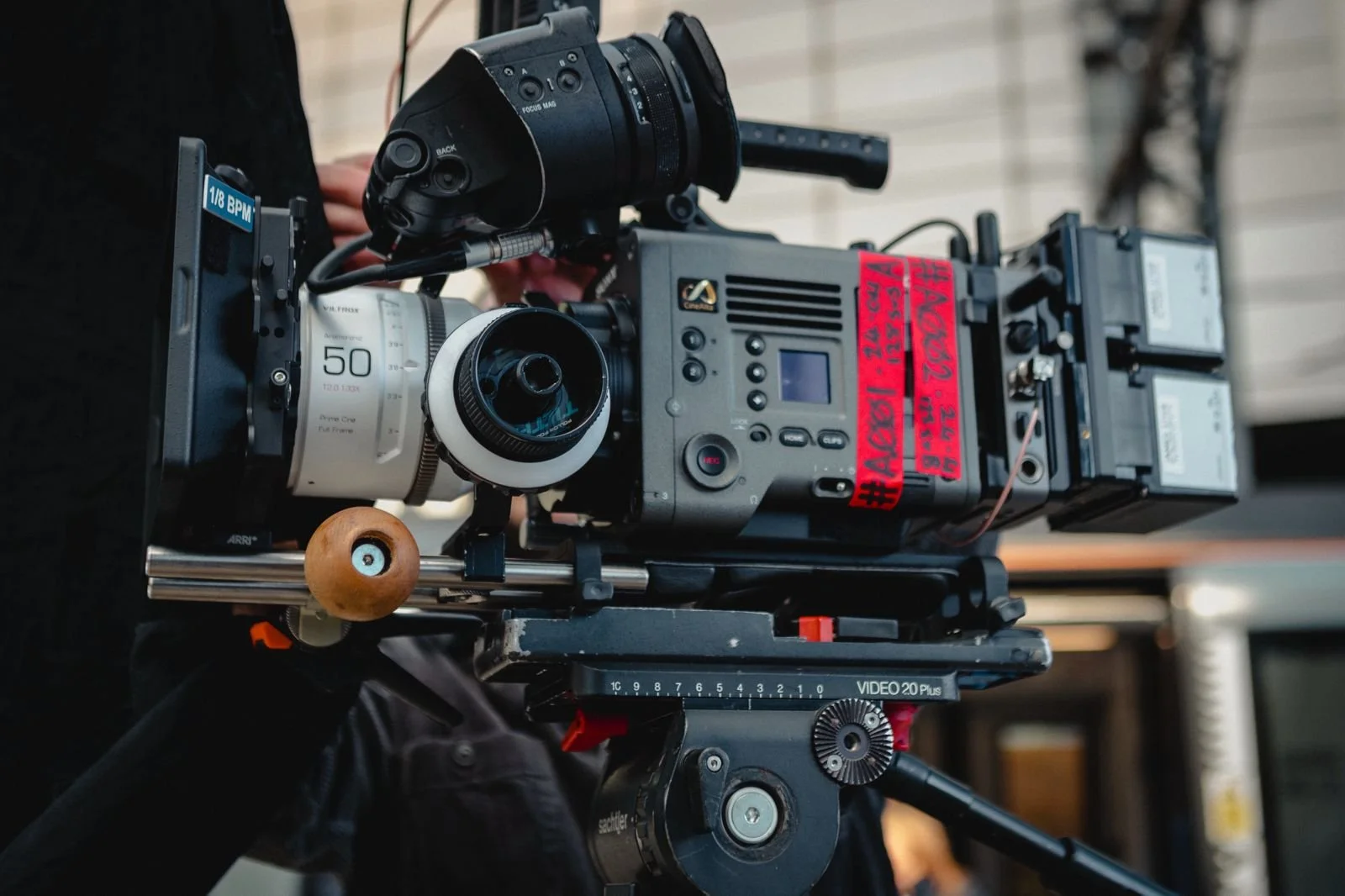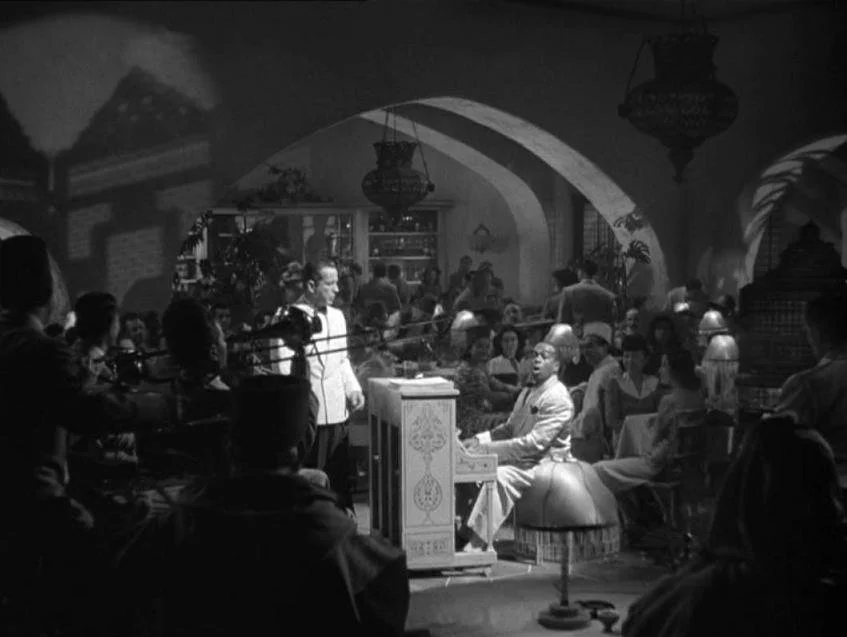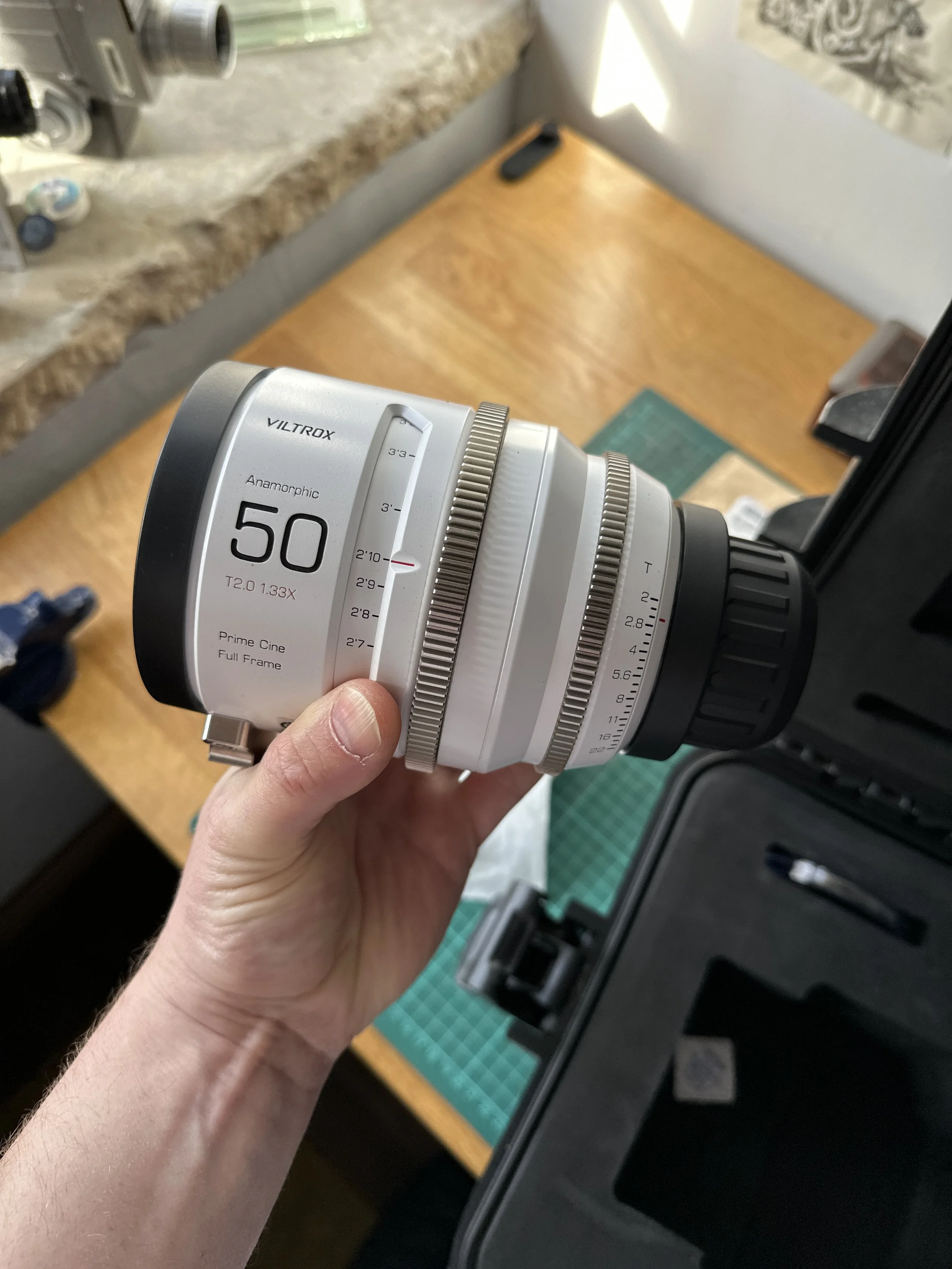Four walls of choice.
Viltrox Epic 1.3x Anamorphic Lenses
There’s a hidden superpower to aspect ratio. It doesn’t sound sexy. It’s not some new camera or a lens with a trendy name. But when I’m first asked to help shape the look of a project, it’s where my mind goes first. Yet hardly anyone consciously thinks about it. Not properly. But everyone — everyone on set, everyone in the audience — feels it. Even if they couldn’t tell you the difference between a 16:9 and a 4:3, they’ll recognise the sensation the moment that first frame locks into place. Decades of cinema, TV, VHS tapes, DVDs, and now streaming thumbnails have trained us.
Aspect ratio is just the relationship between the width and height of an image or screen.
16:9 means for every 16 units of width, there are 9 of height. Easy enough. It’s the everyday ratio for TV, YouTube, general video content.
1.78:1 is exactly the same shape — just the technical way of saying it. Sixteen divided by nine equals roughly 1.78.
In short:
16:9 = the simple, visual version.
1.78:1 = the technical, decimal version.
I’ll use both here, depending on what fits. Because once you start thinking in ratios, you stop seeing a screen — you start seeing a stage.
Here’s the basic emotional shorthand most of us are running on without realising it:
4:3 / 1.33:1 feels nostalgic, boxy, almost innocent. Think old family footage, early cinema. It compresses time.
16:9 / 1.78:1 feels current. It’s the language of modern news, docs, live TV - the world we live in now.
2.39:1 and you're deep into the cinema experience. Big screens. Big feelings. Expansive landscapes and epic scale.
And then there’s the oddballs — 3:2 / 1.5:1 — slightly wider than 4:3. Feels natural, balanced. Some DSLR and cinema cameras have an open gate modes which is or comes close to 3:2, maximising sensor size and quality. IMAX’s 1.43:1 lives nearby too — huge, vertical, immersive. Large format. Unapologetic. Back in the 1950s, VistaVision shot on a 1.5:1 frame, matching 8-perf full-frame 35mm stills. They projected it differently, but it’s all rooted in the same simple, beautiful geometry.
2:1 - Mindhunter, Netflix
Personally, I’m a simple man. I love 2:1. Always have. Even before Netflix made it fashionable with House of Cards, Mindhunter, The Crown. 2:1 sits beautifully between 16:9 television and 2.39:1 cinema scope. Wide enough to feel cinematic, tall enough to stay grounded. It doesn’t shout about itself. It just works. Wide compositions elevate the storytelling without wasting vertical space. A working man's ratio — clean, flexible, quietly elegant.
Choosing your aspect ratio early isn’t just good practice — it’s essential. It decides your sensor size, your lens choices, your locations and setups. It defines how your story will breathe. Commit early and you’ll have a visual language that feels intentional from the first shot to the last. Wait until post to figure it out, and you’ll be patching cracks with duct tape or at least someone else will which no DP ever wants.
And creatively? Filmmakers can — and should — weaponise aspect ratio. Look at The Grand Budapest Hotel. Anderson changes the aspect ratio depending on which decade the story is in — 1.37 for the 1930s, 2.35 for the ’60s. It’s not a gimmick. It’s storytelling through frame shape. In First Man, Linus Sandgren shot gritty training sequences on 16mm, 1.85:1, to make it all feel intimate, real. NASA control rooms were cleaner, shot on 35mm. Then, when Armstrong steps onto the moon, the frame blows up into towering 1.43:1 70mm. You don't just watch that scene — you step on to the moon.
Jackson knew Middle-earth needed space. You can’t shoot hobbits crossing the mountains in 16:9. You go wide, and you go big.
But all of it — the style, the scope, the feeling — comes back to composition. As a DP and camera operator, it's all we think about. Frame size doesn’t just tell you where the edges are — it tells you where the eye goes. What lives. What dies. It’s grammar, not decoration.
Take the Rule of Thirds. Works beautifully, until it doesn’t. Wider frames invite you to fill every inch — isolate your subject against open space. But too wide in the wrong space? Suddenly you’re seeing stands, fire exits, craft services and the boring reality behind the magic of what we are trying to do.
Look at Casablanca — shot in a tighter frame, still breathing with depth, light, and shadow. Proof you don’t need wide frames to make a big impact - "Here's looking at you, kid."
4:3/1.33:1 - Casablanca
And yes, we’ve all made the mistake. Shooting 16:9, then whacking on some black bars in post and pretending it’s cinematic. It's not.
Aspect ratio isn’t a costume you dress your footage in after the fact. It’s the foundation. It’s architecture.
These days, I’ve been rebuilding my own approach. Thanks to a love affair with 1.3x anamorphic lenses. They give me just the right amount of distortion. Just enough sharpness, just enough depth. But then you hit the technical brick wall.
If you’re shooting on a Venice Mk1 without the AXS-R7 module, you’re locked out of internal 3:2 open gate. No perfect 16:9 delivery off 1.3x glass. I’m hunting for an R7, by the way. If you’ve got one collecting dust, please reach out.
Without the R7, your options shrink. You’re shooting in 17:9 or 16:9. De-squeeze, and you're landing closer to 2.39:1. Beautiful if you want epic widescreen. A headache if the client expects 16:9.
Two practical ways out:
Crop to a 2.8K 16:9 timeline — around 2800x1573. Good for DCP. Good enough for cinema. Lets you reframe horizontally a bit in post.
Edit in a 4K UHD timeline and scale up by 1.3x — Fill the frame. Lose a smidge of sharpness, sure. But on any high end camera with decent glass? The image still sings. In fact, that tiny bit of softness gives it a texture I love.
Neither is perfect. But both are workable if you want the glass.
So what’s the takeaway?
Hopefully there’s something useful here for all the operators, DPs, and directors out there. And a couple of nuggets for the few remaining Venice Mk1 shooters without an R7, trying to wrestle anamorphic into submission - it’s a stretch I know, I’m probably the only one.
But hopefully you can see the impact of choose your aspect ratio early. Before you shoot. Don’t wait until post to “find the frame.” By then, you’re working backwards. If you’re composing for 2.39 but delivering in 16:9/1.78:1, your beautiful wide compositions are going to get butchered - especially as it so easy for a stranger to reframe you work in post.
Think about what your story needs to feel like.
Is it intimate? Expansive? Cramped?
Does the environment matter? Or is it all about the face?
Whatever it is — commit. Do it in camera. Live and breathe in that frame.
Press your eye against that viewfinder and fall into that that world you and your team are fighting to bring into existence. Even if no one else notices the decision, they’ll feel the difference.
Viltrox Epic 50mm



